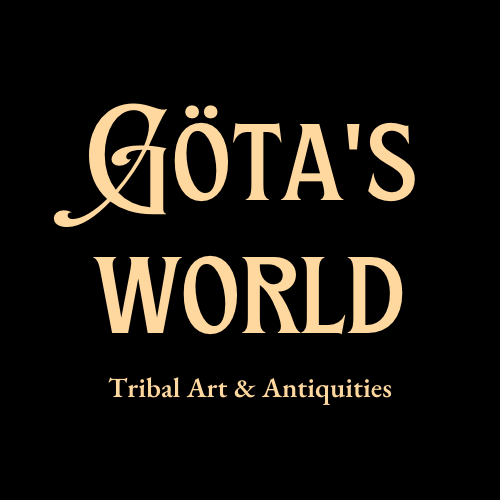Egyptian Faience Amulet of Thoth as a Baboon
Egyptian Faience Amulet of Thoth as a Baboon
Couldn't load pickup availability
New Kingdom to Third Intermediate Period, c. 1550–664 BC, Egypt
A fascinating mold-formed faience amulet depicting Thoth in his sacred baboon form, rendered in a creamy, pale hue and seated atop a rectangular base. The figure is portrayed with folded arms resting atop bent legs, its thick, textured mane suggested by vertical incisions and cross-hatching across the body. A tall suspension loop, now lost, once protruded from the back, indicating its function as a protective amulet worn or carried by the living or buried with the deceased.
This amulet captures the baboon manifestation of Thoth (ancient Egyptian: Djehuty), the god of wisdom, writing, accounting, astronomy, and intellectual pursuits. While more commonly depicted as an ibis-headed man, Thoth was also closely associated with the hamadryas baboon (Papio cynocephalus), a sacred animal revered for its perceived wisdom and connection to the sun. In his baboon form, Thoth was linked to Hedj-wer, “the Great White One,” a lunar and solar deity worshipped from Egypt’s earliest dynasties.
By the end of the Old Kingdom, Thoth's iconography evolved primarily to an ibis-headed man wielding a scribal palette, stylus, or notched palm rib—a visual embodiment of divine record-keeping. Yet amulets such as this preserve the older and deeply symbolic baboon form, thought to channel divine intellect, protective power, and spiritual insight.
Amulets like this were not merely decorative but held deep apotropaic significance, believed to endow the wearer with wisdom, clarity, and the protective authority of the gods. A compelling artifact from a long continuum of reverence for Thoth, this amulet offers a powerful glimpse into the spiritual life of ancient Egypt.
Moderate condition. Surface wear and abrasions commensurate with age, chip and nicks with encrusted patina. Size approx. 1,1cm x 0,4cm x 0,5cm.
Provenance: British private collection.
For a similar example see:
Amulet, The British Museum, Accession Number: AN1896-1908-EA.884 (https://www.britishmuseum.org/collection/object/X__5769?selectedImageId=1371912001)
References and further reading:
Amulets of Ancient Egypt, Carol Andrews, University of Texas Press, 1994.
Talismans & amulets, Felicitas H. Nelson, New York: Sterling, 2008.
Ancient Egyptian Amulets, Isabel Stünkel, In Heilbrunn Timeline of Art History, New York: The Metropolitan Museum of Art, February 2019. (http://www.metmuseum.org/toah/hd/egam/hd_egam.htm)
Handbook of Egyptian mythology, Geraldine Pinch, Santa Barbara, Calif.: ABC-CLIO, 2002, p. 127.
Egypt in the New Kingdom (ca. 1550–1070 B.C.), Catharine H. Roehrig, In Heilbrunn Timeline of Art History, New York: The Metropolitan Museum of Art, October 2000. (http://www.metmuseum.org/toah/hd/nking/hd_nking.htm)
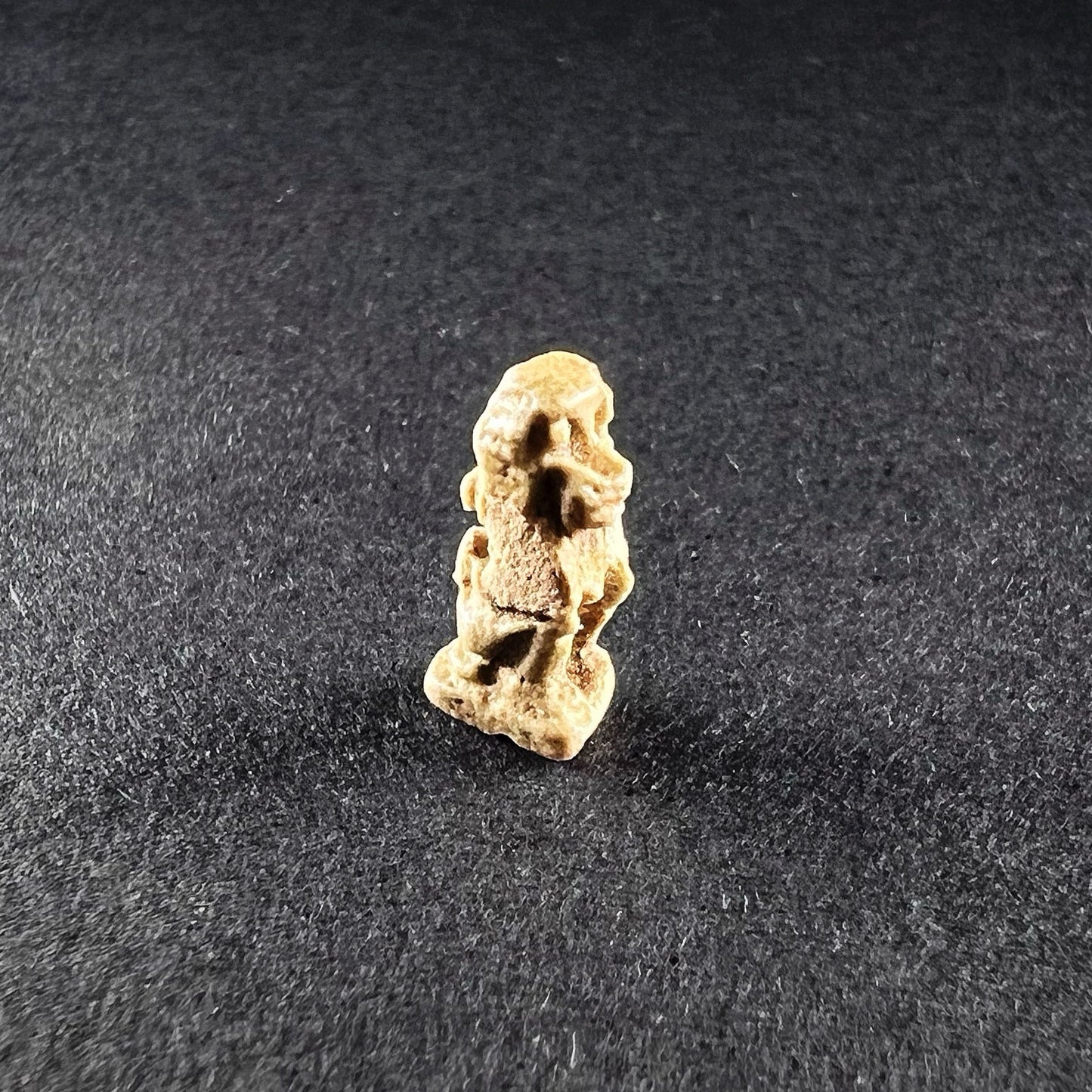
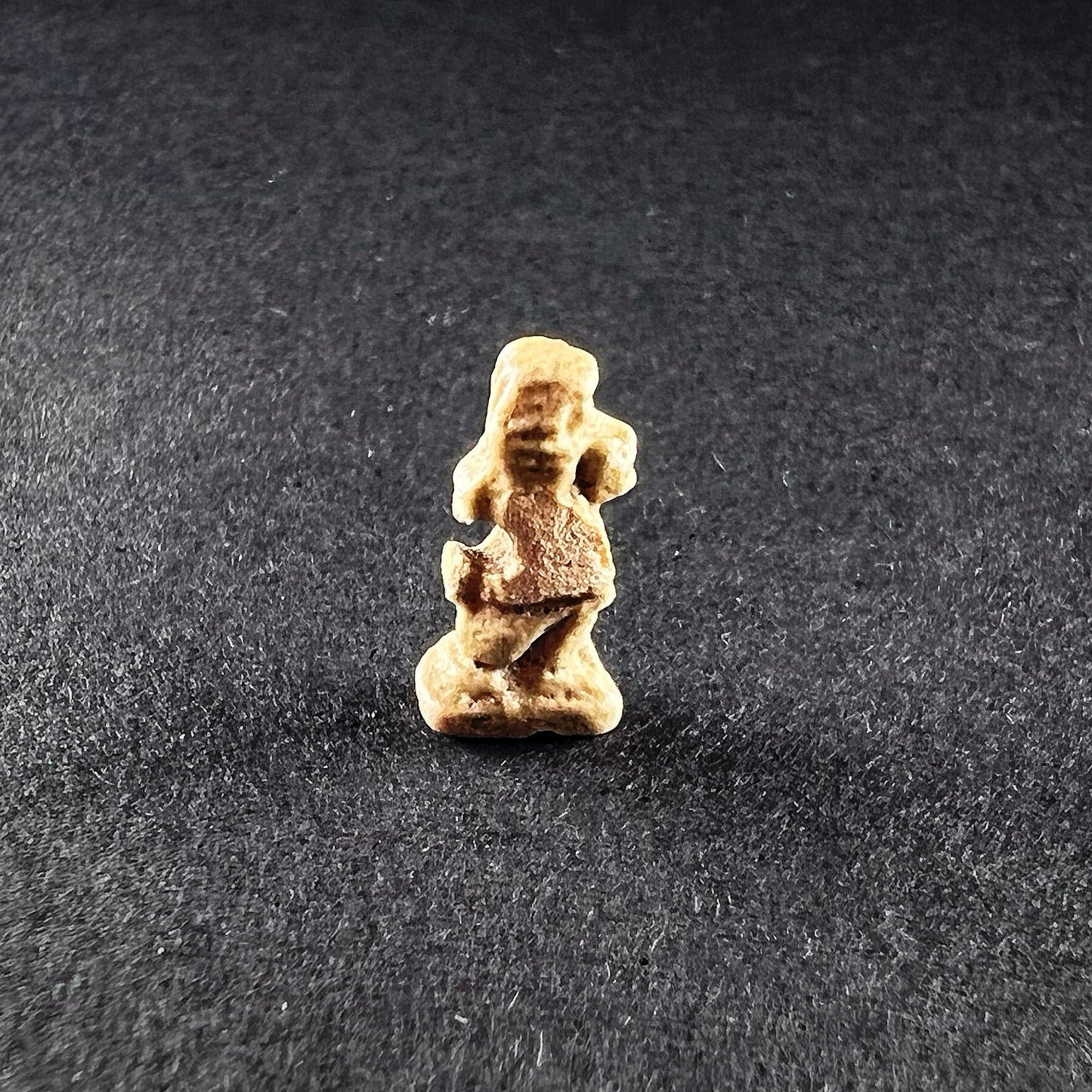
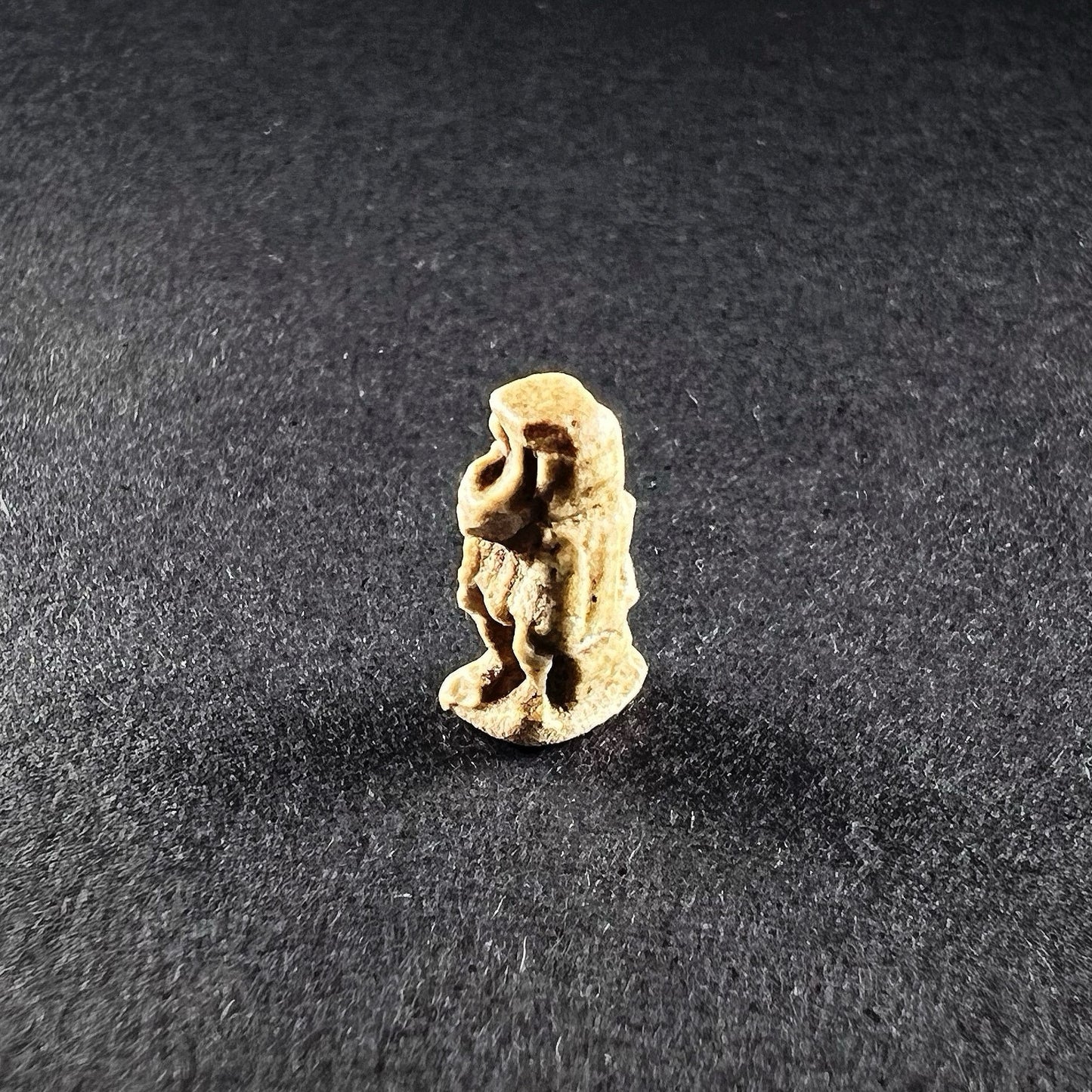
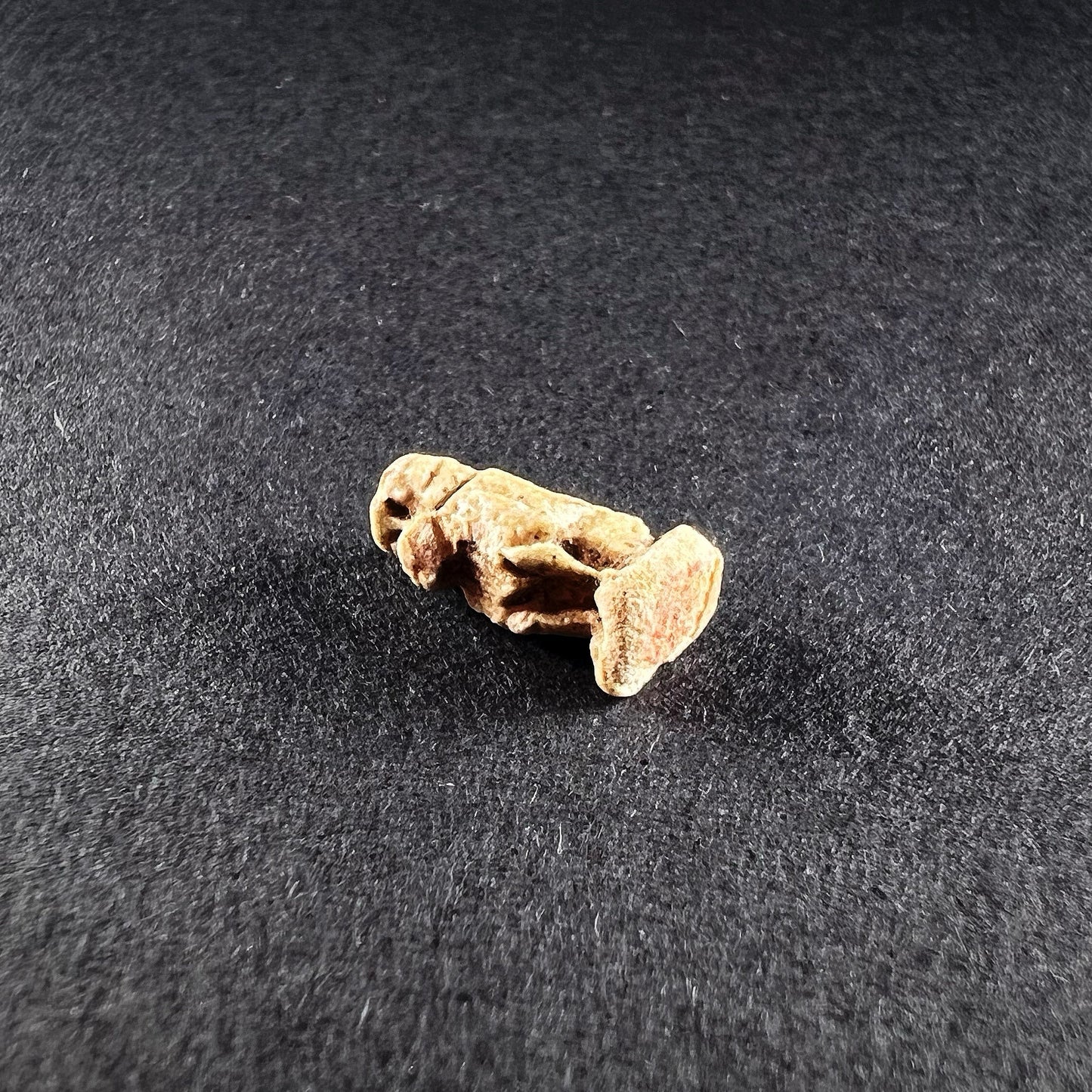
-
Shipping
The shipment will be prepared in the course of 3-5 days and dispatched via Posti Group Oyj or purchased item(s) can be picked up from our shop during the store's opening hours (Tarkk’ampujankatu 4, 00140, Helsinki, Finland). Within the Finland, all items are shipped via Posti Group Oyj unless otherwise requested. We pack the items carefully and mainly in recycled materials because we want to save nature. You will receive the tracking number for your items by e-mail.
-
Returns
Returns and exchange will be accepted within fourteen days (14) of receipt at the purchaser’s cost to include freight and packaging. Items must be returned in the same condition as when they were shipped, and will not be accepted if damaged or altered in any way. Please inform us via email (info@gotanmaailma.fi) or by calling +358408408352 before sending. We do not accept returns more than 14 days after delivery.
